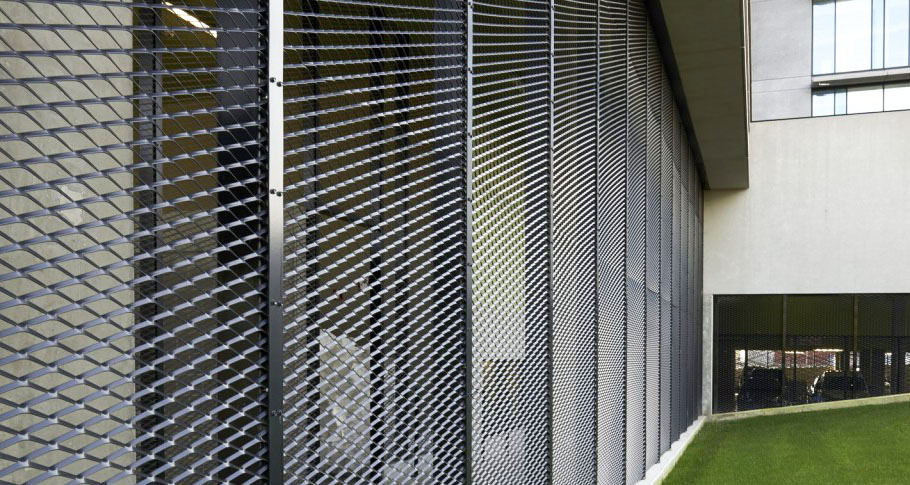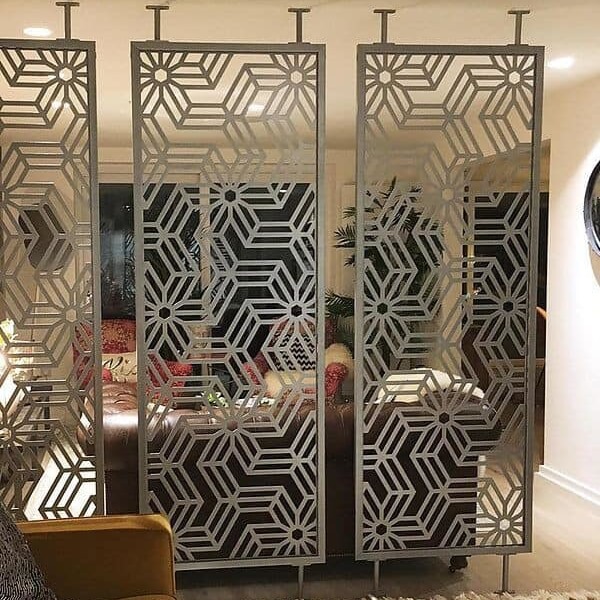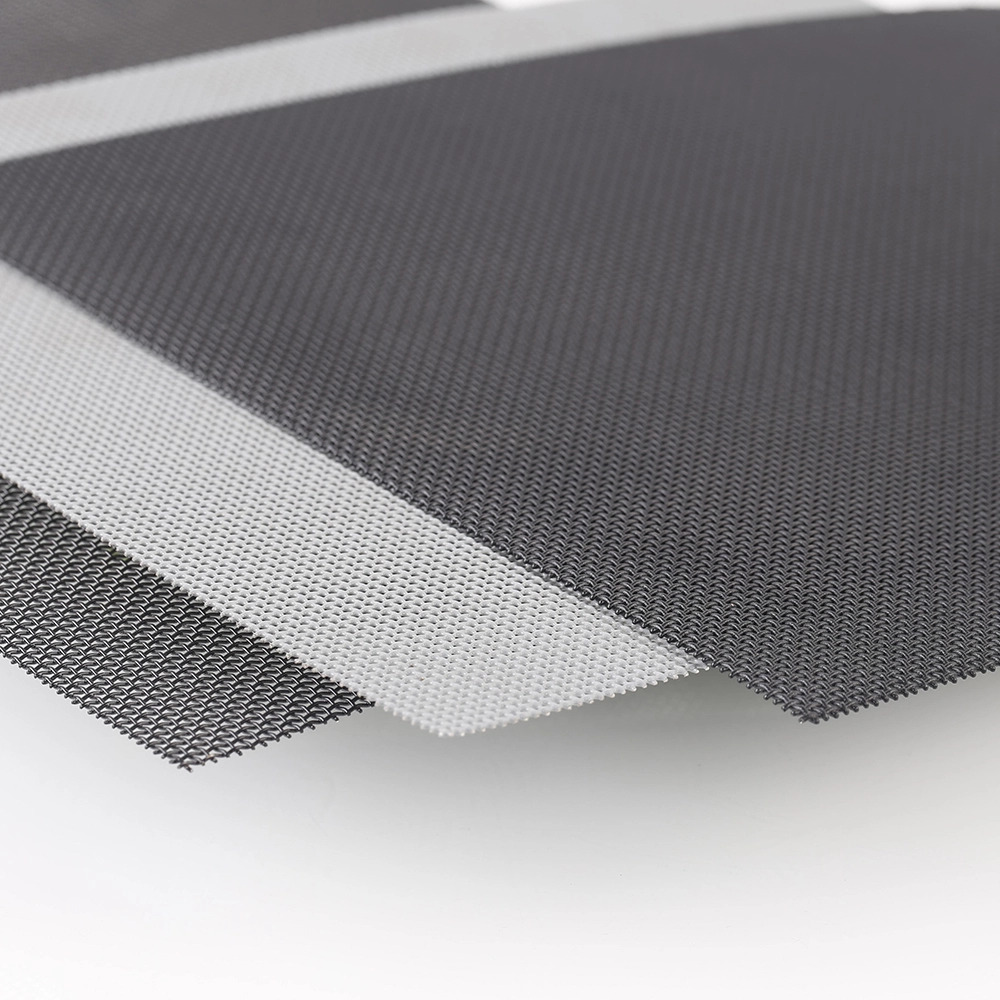In the ever-evolving field of architectural decoration, the stainless screen has emerged as a versatile and sophisticated design element that seamlessly combines functionality and visual appeal. Originally used for basic partitioning or shielding, it has now evolved into a multifunctional component widely used in both residential and commercial spaces. With its sleek aesthetic, superior physical properties, and adaptability, the stainless screen has become a preferred choice for modern architects and interior designers.
Wide Range of Applications
Residential Spaces
In home environments, the stainless screen plays a key role in space segmentation and aesthetic enhancement. One common application is at the entrance, where it functions as a privacy shield while allowing light to flow through, avoiding the sense of confinement associated with traditional solid walls. Hollow-carved designs add elegance without compromising utility.
In open-plan layouts, such as living and dining areas, screens serve to define boundaries while maintaining spatial coherence. Stainless steel screens with minimalist lines are particularly well-suited for contemporary homes, contributing to both form and function.
Staircases and balconies also benefit from stainless screens. Replacing traditional wooden or iron railings, stainless steel offers a combination of safety and style. Its transparent or semi-transparent designs reduce visual heaviness and add a refined modern touch. In bedrooms, stainless screens can act as a backdrop for beds or as partitions for dressing areas, especially when integrated with soft lighting to create dramatic light and shadow effects.
Commercial and Public Spaces
In high-traffic commercial and public environments, stainless screens are widely adopted for their durability and aesthetic versatility. Hotels and clubs often use mirrored or titanium-coated screens in lobbies and reception areas to reflect light and amplify the sense of luxury. Hollow-cut designs also allow for the subtle division of spaces in restaurants, balancing privacy with an open ambiance.
Hospitals, clinics, airports, and transportation hubs utilize stainless screens for their hygienic qualities and structural strength. Their easy-to-clean surfaces and antibacterial properties make them ideal for partitions in medical facilities. In airports and train stations, they help direct passenger flow while withstanding frequent use.
Exhibition halls and office buildings often employ stainless steel screens as background panels or transparent partitions. These installations enhance spatial clarity, optimize functionality, and add artistic flair without sacrificing visibility.
Special Environments
Certain environments demand materials that resist moisture, heat, or chemical exposure—requirements that stainless steel fulfills with ease. In swimming pools, spas, and other humid environments, stainless screens resist corrosion and maintain their appearance far longer than traditional materials. Kitchens and laboratories also benefit from stainless steel’s oil and chemical resistance, allowing for quick disinfection and easy cleaning.
Core Advantages
Superior Physical Properties
Stainless steel is one of the most durable construction materials available today. It is impact-resistant, deformation-resistant, and immune to issues like cracking or pest damage that commonly affect wood. Its structural strength supports long-term use in both residential and commercial contexts.
The material is also highly adaptable to different environmental conditions. It resists corrosion, moisture, and fire, making it ideal for coastal areas or interiors with high humidity levels. Combined with fire-retardant seals, stainless steel screens enhance safety without compromising design.
Functional Benefits and Low Maintenance
Another key strength of stainless screens is their functional flexibility. Many designs feature hollow structures that allow for built-in wiring, making it easy to separate and organize strong and weak electrical systems without embedding cables in walls. This allows for easier installation, upgrades, and repairs.
Maintenance is minimal—most surfaces can be cleaned with a damp cloth, with no need for repainting or polishing. Unlike coated materials, stainless screens retain their color and finish for years. They are also environmentally friendly, emitting no formaldehyde or odors and made from fully recyclable materials.
Design Versatility and Aesthetic Appeal
From sleek modern lines to ornate traditional motifs, stainless steel screens can be tailored to suit any interior style. Options range from brushed or matte textures to high-gloss mirror finishes, all of which contribute different visual effects. Electroplating techniques allow designers to incorporate luxurious colors like rose gold, antique bronze, or black titanium, further expanding the design possibilities.
Lighting integration further enhances the visual impact. Stainless screens can be backlit or spot-lit to create dramatic focal points, turning functional partitions into pieces of architectural art.
Comparison to Traditional Materials
When compared to wooden screens, the advantages of stainless steel are clear. Wood is prone to mildew, deformation, and high maintenance requirements, while stainless steel remains stable and clean with minimal upkeep. Stainless screens also offer larger spans through welded structures, eliminating the need for splicing and improving structural integrity.
Although the initial cost may be higher, the long lifespan and ability to reuse or reposition stainless screens make them a more economical choice in the long term.
With its impressive balance of durability, aesthetic appeal, and functional flexibility, the stainless screen has become a cornerstone of modern architectural decoration. Its use spans from residential foyers to commercial lobbies, from dry office spaces to humid spa environments. As surface treatment technologies advance—introducing innovations like anti-fingerprint nano-coatings—stainless screen design will continue to evolve, bridging the gap between practicality and architectural art.
Request a Quote
Please email us by the contact form below, we will get back to you as soon as possible.









